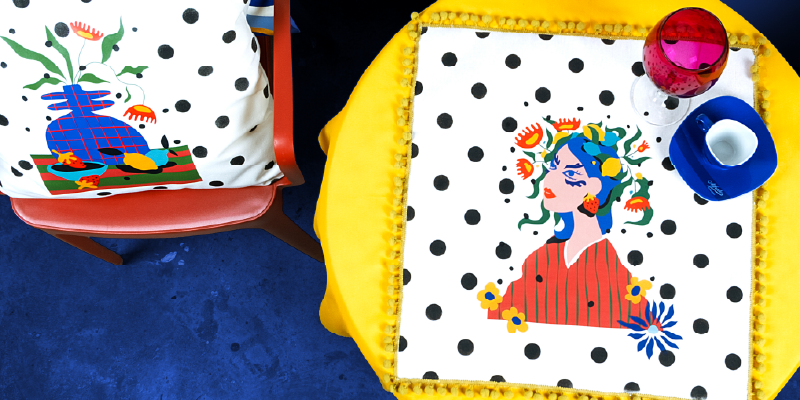CADENCE FABRIC TRANSFER AND APPLICATION TIPS

Cadence fabric transfers can be applied on products such as patternless t-shirts, dresses, pillowcases, tote bags, curtains and tablecloths to recolor them. Cadence fabric transfers are available in fabric contour transfer, black & white fabric transfer or fabric foil transfer. Currently, new models are being released.
Cadence fabric transfer application steps are as follows:
- The excess on the selected transfer can be cut or sized according to the fabric.
- It is placed on the fabric to be applied so that the patterned side remains on the bottom.
- The transfer is ironed with a steamless iron for 1-1.5 minutes by applying pressure with circular movements.
- After cooling, the back side of the transfer is gently removed from the fabric.
- The fabric on which the transfer is applied is washed delicately by hand or in the machine at 30 degrees.
In addition, when applying fabric foil transfer, the pattern can be sized as desired and can be applied on the fabric with a steamless iron by placing a napkin on the transfer.
Rub-On Transfer and Implementation Tips
Rub-On transfer, widely used in handicrafts, is a technique used to transfer designs or writings from one surface to another. Rub-on transfer is preferred because it is easy to apply, has different color and pattern options and gives highly aesthetic results. It is also less complicated than other transfer methods and is an accessible option for beginners. This method is based on the principle of rubbing and pressing to transfer the design to the desired surface, without a sticker or adhesive backing plate. It is a professional transfer technique used to add a stylish and unique touch to artwork, handmade cards, personal items such as diaries and organizers, furniture and home decor projects.
Rub-On Transfer application steps are as follows:
- Rub-On transfer is cut and adjusted according to the surface to be applied. The protective tape under the adhesive surface on the back of the transfer is gently removed and adhered to the surface.
- After gluing, the pattern is transferred to the surface to be applied by applying pressure to the patterns with the help of a spatula or wooden stick.
- At this stage, the design is transferred slowly and smoothly to the target surface.